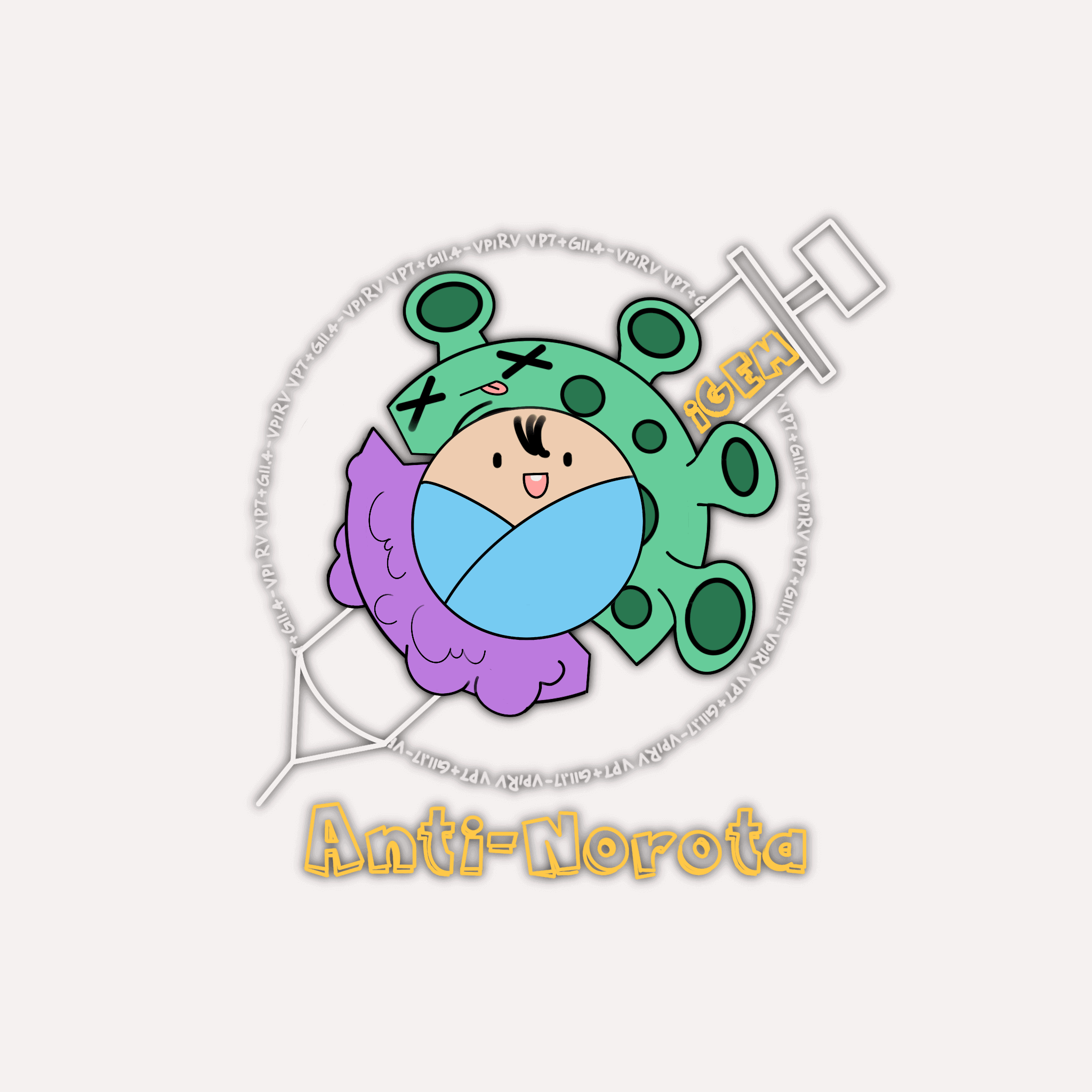Problem we want to solve
Noroviruses and rotaviruses are major causative agents of acute gastroenteritis worldwide. These
highly contagious viruses spread via contaminated food or water as well as person-to-person
contact. Infection results in severe vomiting, diarrhea, and abdominal pain lasting 2-3 days.[1]
While most cases are self-limiting, norovirus and rotavirus pose life-threatening risks to
infants, young children, immunocompromised individuals, and the elderly. Despite this immense
disease burden, there are currently no approved vaccines for either pathogen. Several candidate
norovirus vaccines have reached clinical trials, but none have demonstrated robust clinical
efficacy thus far. No rotavirus vaccine has progressed beyond early development. Safe and
effective vaccines are urgently needed to reduce the morbidity and mortality inflicted by these
viruses.
Design
Our project aims to tackle this unmet medical need by producing dual vaccine protection against
both norovirus and rotavirus infection. Thus, we developed a vaccine specifically against
norovirus. We constructed two plasmids expressing norovirus antigenic genes (i.e., GII.4-VP1 and
GII.17-VP1)[2] separately through genetic engineering, and transformed them into E. coli BL21
(DE3) strain, and expressed and purified them. On this basis, we developed a dual vaccine that
can be used both in immunizing against norovirus and rotavirus. For this purpose, we expressed a
fusion of the norovirus antigen gene GII.17-VP1 and the rotavirus antigen gene RV-VP7 and
transformed the plasmid into E. coli BL21 (DE3) and Nissle 1917, and performed expression and
purification. Finally, we will take the purified vaccines and verify their antiviral ability by
animal experiments.
Goal
This project ultimately aims to pioneer the development of a dual norovirus-rotavirus vaccine to
protect against the major causative agents of viral gastroenteritis. We will lay the groundwork
for future clinical translation by demonstrating proof-of-concept for chimeric VLP dual
immunization in preclinical studies. If efficacious, this strategy could significantly reduce
the disease burden imposed by norovirus and rotavirus, especially among vulnerable populations
in low-income regions. Our long-term vision is to make vaccine access more equitable worldwide
and diminish preventable childhood mortality.
References:
1.Hallowell, B. D., Parashar, U. D., & Hall, A. J. (2019). Epidemiologic challenges in norovirus vaccine development. Human vaccines & immunotherapeutics, 15(6), 1279–1283.
2.Yang, L., Wang, Q., Xu, L., Tu, C., Huang, X., & He, B. (2018). Detection and Characterization of a Novel Norovirus in Bats, China. Virologica Sinica, 33(1), 100–103.










